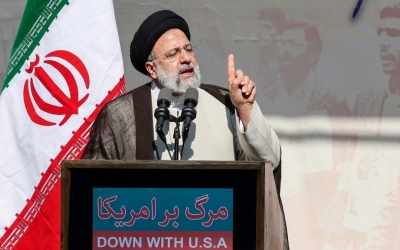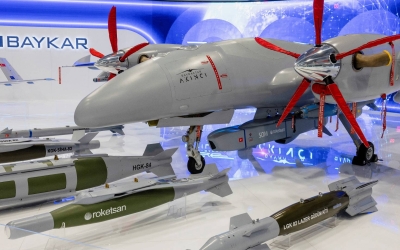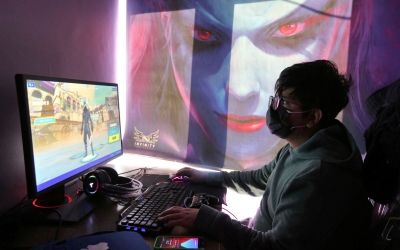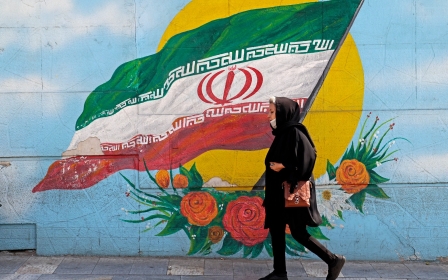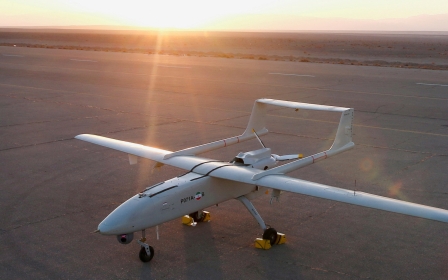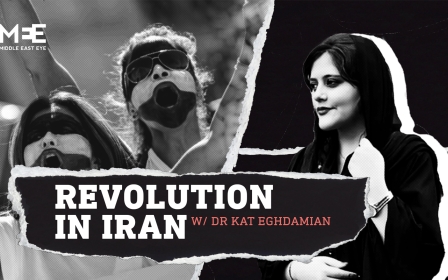Iranian press review: Satellite-carrying rockets have military purposes, hints IRGC commander

Military goals for peaceful space programme
The commander of Iran's Passive Defence Organisation Brigadier General Mohammad Hossein Jalali has signalled that the successful test flight of a rocket capable of propelling satellites into space was part of the country's military programme.
The Ghaem 100, Iran's first three-stage launch vehicle, will be able to place satellites weighing 80 kg in an orbit 500 km (300 miles) from the earth's surface, IRNA said last week.
However, Jalili, who commanded the Islamic Revolutionary Guard Corps Aerospace Force (IRGCASF) between 1992 and 1997, has hinted at the country's military ambitions in a congratulatory message to the current head of IRGCASF.
"[The rocket test] has confirmed Iran's dominance, defence capabilities, and deterrence power, demonstrating to the enemies of the establishment that their villainies and conspiracies would be responded to," reported the Islamic Revolutionary Guard Corps-affiliated daily, Javan.
Iranian officials have long denied that the country’s space and nuclear programmes have any military purpose.
Last week, Iran also unveiled an upgraded version of the Bavar 373 surface-to-air missile defence system.
Fars News reported that the Bavar 373 could simultaneously hit six targets at a range of 300 kilometres.
Increasing worries about Iran's engagement in Ukraine war
Iranian analysts have warned that any Ukrainian attack against Iran would benefit Russia amid escalating tensions between Tehran and Kyiv over Moscow's deployment of Iranian drones in the Ukraine war, local media reported.
On 5 November, Mikhail Podolyak, an advisor to the Ukrainian president, called for a strike on drone and ballistic missile manufacturing centres in Iran in response to Iran's sale of drones to Russia.
Podolyak's comments were widely covered in Iran and some analysts have warned over a potential expansion of the Ukraine war to other countries.
"This Ukrainian official's comment was inappropriate, and the main beneficiary of his theory would be Russia, not Ukraine," a former Iranian diplomat told the Arman-e Emrouz daily.
"Russians will be happy to see a new front added to their confrontation with the US. That would shift the centre of attention from Russia to Iran."
In response to Podolyak, Seyed Mohammad Marandi, an advisor to Iran's nuclear negotiating team with close ties with Iran's supreme leader, adopted a more aggressive tone and threatened Ukraine with retaliation for any potential military operation against Iran.
"Ukraine will face much bigger consequences in case of any hostile act on behalf of Kyiv," he wrote on Twitter.
Since September, Iran's drone programme has been under scrutiny as Ukraine and Western powers accuse Tehran of selling suicide drones to Moscow.
On 5 November, Iran for the first time publicly acknowledged the sale of homegrown UAVs to Russia before the war in Ukraine.
Tether rush in Iran
Iranians have rushed to buy the cryptocurrency stablecoin Tether as the Iranian rial hit a record low against the US dollar on the unofficial market this week.
On Saturday, one US dollar was selling for about 365,000 rials. However, local media reported that people had no desire to exchange US dollars for rials, as they waited for a more stable market.
In recent years, Iranian citizens have used US dollars or gold coins to save money in an attempt to safeguard the value of their funds during the country's severe economic crisis.
As authorities crack down on dollar dealers, Iranians have chosen Tether as a reliable source of investment.
The economic daily Tejarat News wrote that more Iranians were interested in purchasing Tether because authorities could not impose any limits on deals with the stablecoin.
In 2018, the government banned exchanging foreign currencies outside the state-run exchange centres, where those currencies are sold at a lower price.
On Saturday, one US dollar changed at a rate of about 290,000 in registered exchange centres.
Economists believe that the deadlock in Tehran and Washington's indirect talks over a potential return to the 2015 nuclear talk, and the internet shutdowns due to the anti-government demonstrations were the leading causes for the new fall of the local currency.
Khabar Online suggested that cutting off the internet was the third major shock to Iran's economy after the US sanctions and the pandemic.
Iranians can't afford second-hand appliances
Millions of Iranians have lost the purchasing power to buy secondhand home and kitchen appliances as the country's economic crisis worsens.
Davoud Abdollahi Fard, the director of the second-hand goods brokers' syndicate, said that increasing inflation had negatively affected merchants who sell used appliances, local media reported.
"People's purchasing power is weak, and they do not have money to buy second-hand home appliances," he was quoted as saying.
In April, the price of new home appliances sharply increased, making millions of Iranians unable to buy those products.
According to reports, the prices of home appliances have tripled in the past four years.
"Like new products, the price of secondhand goods has also increased in recent months, and this increase exceeds people's buying power," Abdollahi Fard said.
*Iranian press review is a digest of news reports not independently verified as accurate by Middle East Eye.
Middle East Eye delivers independent and unrivalled coverage and analysis of the Middle East, North Africa and beyond. To learn more about republishing this content and the associated fees, please fill out this form. More about MEE can be found here.


